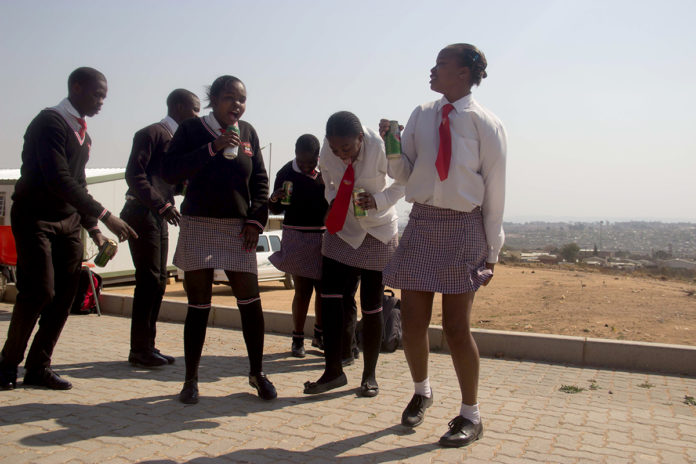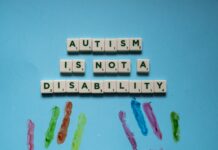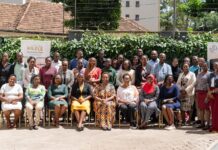By Diana Chiyangwa
Johannesburg, South Africa: Meet Jane Phakade, a Johannesburg mother to a teenage girl impregnated at the age of 14, a situation that forced her to drop out of school and resume her new responsibilities as a mother.
According to Phakade, the pregnancy was a result of peer pressure and the urge for her daughter to experiment. However, despite the challenges associated with teenage motherhood, Phakade vows she will stay strong for her daughter.
“I will support her throughout, although the process is very stressful,” says Jane Phakade.
The case of Phakade highlights the Early Unintended Pregnancy (EUP) crisis that has been rife in many parts of South Africa in the past few years. To counter the EUP challenge, stakeholders are increasingly initiating campaigns to increase awareness on the impact of early pregnancies.
For instance, the “Let’s Talk EUP” campaign was launched in 2019 to advocate for actions to eliminate EUP at both regional and national levels in 20 countries in East and Southern Africa (ESA).

In general, eliminating EUP cases calls for increased awareness among citizens on social issues affecting young girls who become pregnant at an early age and enhanced participation of community-based organizations and their provinces in local and national policy-making. Like the ‘Let’s Talk EUP’ campaign, these approaches should yield positive results.
To curb the crisis, there is a need to push for assistance to the affected girls to complement the mandate undertaken by EUP campaigns in the affected communities.
The missing link in EUP education
In advocating for EUP eradication, the media has been identified as a missing link. Unlike politics, early unintended pregnancy stories and campaigns like “Let’s Talk EUP” are more likely to have less coverage than any other topics.
In November 2021, UNESCO held training for journalists on the ESA Commitment Beyond 2020. The training was initiated to influence the media to give more coverage on the topic. One of the training objectives was to promote ESA Beyond 2020 roadmap and activities visibility through mainstream media and social media.
On 21 April 2022, UNESCO, UNFPA, SaAIDS, and Save the Children also launched the regional “Let’s Talk” drama series on EUP. The series seeks to address issues related to Sexual and Reproductive Health and Rights (SRHR) information, modern contraceptives use, early onset of sexual activity, violence against women, and improving young people’s access to SRHR services.
“I think it’s a great idea for schools to include Comprehensive Sexuality Education (CSE) to fight against situations like EUP,” Phakade said.
Impact of EUP
Talking about the psychological effects of early unintended pregnancy, Senator Themba Nhlanganiso Masuku, the Deputy Prime Minister of Eswatini, noted in this radio drama series that the experience is traumatizing, sentiments backed by Phakade.
“Since my daughter got pregnant, she stays indoors in fear of humiliation from society, especially from her peers,” Phakade explained.
The latest official report by Statistics South Africa on ‘Profiling health challenges faced by adolescents in South Africa’ places the number of births delivered in a public health facility by mothers aged between 10-19 in 2019 at 129,223.
Elsewhere, the ministerial briefing for “a comprehensive national dropout management and prevention plan in the National Council of Provinces (NCOP) was held in November 2021. Members and officials in both sessions admitted that data for dropout rates and teenage pregnancies do not accurately track variables to reflect these societal burdens.
They indicated that accurate data and better data collection and analysis tools were lacking. With teenage pregnancy, the data does not factor in variables such as termination of pregnancy, home births, miscarriages, and babies whose births are not registered.
During the NCOP session, Minister of Health Dr. Joe Phaahla raised concerns about teen mothers having risky pregnancies because they are often too underdeveloped to bear children. Their babies are often born prematurely and suffer numerous health complications.
He further highlighted that the high numbers of underage pregnancies South Africa records erode efforts to achieve an HIV/Aids-free generation. It also represents steps backward to arrest gender-based violence and cut girls from educational and economic opportunities.
“Should we continue to marry pregnant girls off? We need to do things differently,” said Joyce Ouma, Influence and Engagement Y+ Global Network of Young People Living with HIV.
The Democratic Alliance’s (DA) Delamaine Christians said the stigma around speaking about sex, contraceptives, and gender-based violence within communities would lead to a “lost generation of girls and vulnerable boys”.
“Teenage pregnancy is an indicator of social and economic disadvantages such as poor education and poor living standards that our youth are battling,” said Delamaine.
The reports further highlight that the overwhelming majority of science/health news was related to Covid-19, the dominant news story content of 2020. The meteoric climb in this major topic’s news value due to the pandemic has been accompanied by a fall in women’s voices and visibility in the stories.
While the news share of science/health stories was significantly higher in 2020 than in earlier periods (from 10% in 2005 to 17% currently), women’s presence in this topic declined by five points after a steady rise between 2000 and 2015.
Phakade said after giving birth, her daughter wished to go back to school and complete her studies. She is currently attending an antenatal clinic and also receiving counseling.
The Department of basic education policy on the prevention and management of learner pregnancy in schools seeks to guide the reduction of unintended pregnancies of their pre and post-natal consequences, the limitation of associated stigma and discrimination against affected learners, and, importantly, the retention and enrollment of affected learners in school.
Furthermore, this policy is informed by a plan to eliminate gender disparities in education.

The report also states that stories that challenge gender stereotypes in Health and Science in Africa are only 2% and 30% of news distribution on the same topic in newspaper, television, and radio news.
According to UNESCO, the sensitization of EUP is paramount in the region as ESA has one of the highest adolescent fertility rates globally, at 102 per 1,000 live births. Many of these early pregnancies are not planned, as evidenced by the high rate of unintended pregnancy in Africa at 89 per 1,000.
East Africa accounts for 112 per 1,000 live births, resulting in 21.6 million unintended pregnancies annually. Adolescents are more likely to have physical complications during their pregnancies, especially from unsafe abortion, and more likely to become young mothers a second time. They also face rejection from their peers and are more likely to drop out of school and face isolation from their communities.
The organization further states that, after AIDS, the second-highest cause of death for adolescent girls is pregnancy-related complications in the ESA region. Their babies also face a substantially higher risk of dying than those born to women aged 20 to 24 years old and are at greater risk of malnutrition, poor mental and physical development, and low educational attainment.
This story was supported by Code for Africa’s WanaData initiative and the World Association for Christian Communication.














